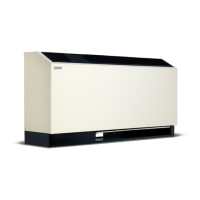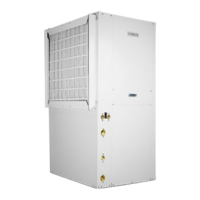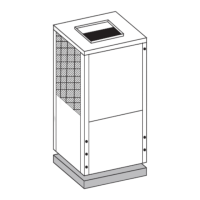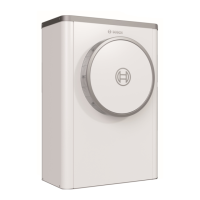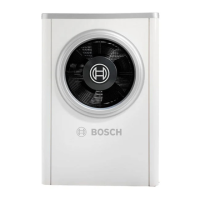Unit Installation
NOTICE
Proper testing is required to ensure the well water quality is
suitable for use with water source equipment.
Both the supply and discharge water lines will sweat if subjected
to low water temperature. Insulate lines to prevent damage from
condensation.
All manual flow valves used in the system must be quarter-turn
brass full
-port ball valves. Globe and gate valves must not be
used due to high-pressure drops and poor throttling
characteristics.
Pressure/temperature ports are recommended in both the
supply and r
eturn lines for system flow balancing and
determining the system capacity versus rated conditions. The
water flow can be accurately set by measuring the water-to-
refrigerant heat exchangers water-side pressure drop. See the
unit specification sheets for the water flow and pressure drop
information. (Refer to the Water-Side
Pressure Drop Table on
page #68.)
NOTICE
DO NOT expose water piping to freezing ambient
temperatures unless the fluid is properly protected with
antifreeze.
NOTICE
Never exceed the recommended water flow rates as serious
damage or erosion of the water-to-refrigerant heat exchanger
could occur.
Always check carefully for water leaks and repair appropriately.
5.8.1 Flow Regulation
Flow regulation can be accomplished by two methods. Most
water contr
ol valves have a flow adjustment built into the valve.
By measuring the pressure drop through the unit heat exchanger,
the flow rate can be determined. Adjust the water control valve
until the desired flow is achieved. Since the pressure constantly
varies, two pressure gauges may be needed in some
applications.
An alternative method is to install a flow-control device. These
devices are
typically an orifice of plastic material designed to
allow a specified flow rate that are mounted on the outlet of the
water control valve. Occasionally these valves produce a flow
noise that can be reduced by applying some back pressure. To
accomplish this, slightly close the leaving isolation valve.
5.8.2 Closed-Loop Flushing
WARNING
If equipped with a disconnect switch, de-energize unit by
opening line voltage at disconnect switch or If no disconnect
switch is present, de-energize by shutting OFF line voltage at
the service panel before flushing the system.
Once the piping is complete, units require final purging and loop
charging. A flush cart pump of at least 1.5 hp is needed to achieve
adequate flow velocity in the loop to purge air and dirt particles
from the loop. Flush the loop to purge air and dirt particles from
the loop. Flush the loop in both directions with a high volume of
water at a high velocity.
Follow the steps below to properly flush the loop:
1. Verify that the power is OFF.
2. Fill loop with water from the hose through flush cart before
using flush cart pump to ensure an even fill. Do not allow the
water level in the flush cart tank to drop below the pump
inlet line to prevent air from filling the line.
3. Maintain a fluid level in the tank above the return tee to avoid
entering back into the fluid.
4. Shutting OFF the return valve that connects into the flush
cart reservoir it will allow 50 psig surges to help purge air
pockets. This maintains the pump at 50 psig.
5. To purge, keep the pump at 50 psig until maximum pumping
pressure is reached.
6. Open the return valve to send a pressure surge through the
loop to purge any air pockets in the piping system.
7. A noticeable drop in fluid level will be seen in the flush cart
tank. This is the only indication of air in the loop.
If air is purged from the system while using a 10 inch PVC flush
tank, the level drop will only be 1 to 2 inches, since liquids are
incompressible. If the level drops more than this, flushing
should continue since air is still being compressed in the loop.
If level is less than 1 to 2 inches, reverse the flow.
8. Repeat this procedure until all air is purged.
9. Restore power.
Antifreeze may be added before, during, or after the flushing
process. Re
fer to the Antifreeze section below for more detail.
18 |
CL Series Heat Pumps — 8733838716 (2024/05)
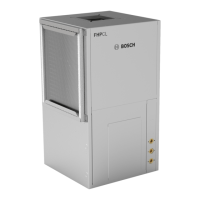
